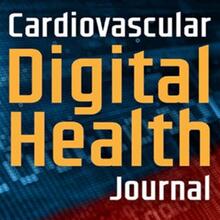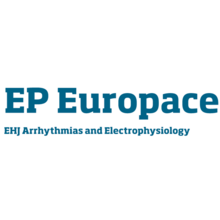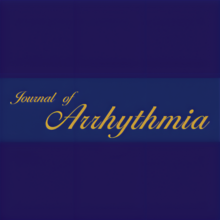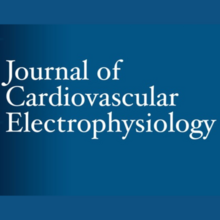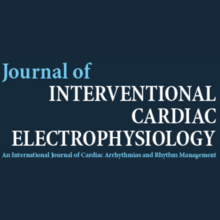Publications
2023
BACKGROUND AND AIMS: Most patients with heart failure (HF) are diagnosed following a hospital admission. The clinical and health economic impacts of index HF diagnosis made on admission to hospital versus community settings are not known.
METHODS: We used the North West London Discover database to examine 34 208 patients receiving an index diagnosis of HF between January 2015 and December 2020. A propensity score-matched (PSM) cohort was identified to adjust for differences in socioeconomic status, cardiovascular risk and pre-diagnosis health resource utilisation cost. Outcomes were stratified by two pathways to index HF diagnosis: a 'hospital pathway' was defined by diagnosis following hospital admission; and a 'community pathway' by diagnosis via a general practitioner or outpatient services. The primary clinical and health economic endpoints were all-cause mortality and cost-consequence differential, respectively.
RESULTS: The diagnosis of HF was via hospital pathway in 68% (23 273) of patients. The PSM cohort included 17 174 patients (8582 per group) and was matched across all selected confounders (p>0.05). The ratio of deaths per person-months at 24 months comparing community versus hospital diagnosis was 0.780 (95% CI 0.722 to 0.841, p<0.0001). By 72 months, the ratio of deaths was 0.960 (0.905 to 1.020, p=0.18). Diagnosis via hospital pathway incurred an overall extra longitudinal cost of £2485 per patient.
CONCLUSIONS: Index diagnosis of HF through hospital admission continues to dominate and is associated with a significantly greater short-term risk of mortality and substantially increased long-term costs than if first diagnosed in the community. This study highlights the potential for community diagnosis-early, before symptoms necessitate hospitalisation-to improve both clinical and health economic outcomes.
BACKGROUND: Accurately determining arrhythmia mechanism from a 12-lead electrocardiogram (ECG) of supraventricular tachycardia can be challenging. We hypothesized a convolutional neural network (CNN) can be trained to classify atrioventricular re-entrant tachycardia (AVRT) vs atrioventricular nodal re-entrant tachycardia (AVNRT) from the 12-lead ECG, when using findings from the invasive electrophysiology (EP) study as the gold standard.
METHODS: We trained a CNN on data from 124 patients undergoing EP studies with a final diagnosis of AVRT or AVNRT. A total of 4962 5-second 12-lead ECG segments were used for training. Each case was labeled AVRT or AVNRT based on the findings of the EP study. The model performance was evaluated against a hold-out test set of 31 patients and compared to an existing manual algorithm.
RESULTS: The model had an accuracy of 77.4% in distinguishing between AVRT and AVNRT. The area under the receiver operating characteristic curve was 0.80. In comparison, the existing manual algorithm achieved an accuracy of 67.7% on the same test set. Saliency mapping demonstrated the network used the expected sections of the ECGs for diagnoses; these were the QRS complexes that may contain retrograde P waves.
CONCLUSION: We describe the first neural network trained to differentiate AVRT from AVNRT. Accurate diagnosis of arrhythmia mechanism from a 12-lead ECG could aid preprocedural counseling, consent, and procedure planning. The current accuracy from our neural network is modest but may be improved with a larger training dataset.
Remote monitoring is beneficial for the management of patients with cardiovascular implantable electronic devices by impacting morbidity and mortality. With increasing numbers of patients using remote monitoring, keeping up with higher volume of remote monitoring transmissions creates challenges for device clinic staff. This international multidisciplinary document is intended to guide cardiac electrophysiologists, allied professionals, and hospital administrators in managing remote monitoring clinics. This includes guidance for remote monitoring clinic staffing, appropriate clinic workflows, patient education, and alert management. This expert consensus statement also addresses other topics such as communication of transmission results, use of third-party resources, manufacturer responsibilities, and programming concerns. The goal is to provide evidence-based recommendations impacting all aspects of remote monitoring services. Gaps in current knowledge and guidance for future research directions are also identified.
IMPORTANCE: During the COVID-19 pandemic, many US states issued or revised pandemic preparedness plans guiding allocation of critical care resources during crises. State plans vary in the factors used to triage patients and have faced criticism from advocacy groups due to the potential for discrimination.
OBJECTIVE: To analyze the role of comorbidities and long-term prognosis in state triage procedures.
DESIGN, SETTING, AND PARTICIPANTS: This cross-sectional study used data gathered from parallel internet searches for state-endorsed pandemic preparedness plans for the 50 US states, District of Columbia, and Puerto Rico (hereafter referred to as states), which were conducted between November 25, 2021, and June 16, 2023. Plans available on June 16, 2023, that provided step-by-step instructions for triaging critically ill patients were categorized for use of comorbidities and prognostication.
MAIN OUTCOMES AND MEASURES: Prevalence and contents of lists of comorbidities and their stated function in triage and instructions to predict duration of postdischarge survival.
RESULTS: Overall, 32 state-promulgated pandemic preparedness plans included triage procedures specific enough to guide triage in clinical practice. Twenty of these (63%) included lists of comorbidities that excluded (11 of 20 [55%]) or deprioritized (8 of 20 [40%]) patients during triage; one state's list was formulated to resolve ties between patients with equal triage scores. Most states with triage procedures (21 of 32 [66%]) considered predicted survival beyond hospital discharge. These states proposed different prognostic time horizons; 15 of 21 (71%) were numeric (ranging from 6 months to 5 years after hospital discharge), with the remaining 6 (29%) using descriptive terms, such as long-term.
CONCLUSIONS AND RELEVANCE: In this cross-sectional study of state-promulgated critical care triage policies, most plans restricted access to scarce critical care resources for patients with listed comorbidities and/or for patients with less-than-average expected postdischarge survival. This analysis raises concerns about access to care during a public health crisis for populations with high burdens of chronic illness, such as individuals with disabilities and minoritized racial and ethnic groups.
Remote monitoring is beneficial for the management of patients with cardiovascular implantable electronic devices by impacting morbidity and mortality. With increasing numbers of patients using remote monitoring, keeping up with higher volume of remote monitoring transmissions creates challenges for device clinic staff. This international multidisciplinary document is intended to guide cardiac electrophysiologists, allied professionals, and hospital administrators in managing remote monitoring clinics. This includes guidance for remote monitoring clinic staffing, appropriate clinic workflows, patient education, and alert management. This expert consensus statement also addresses other topics such as communication of transmission results, use of third-party resources, manufacturer responsibilities, and programming concerns. The goal is to provide evidence-based recommendations impacting all aspects of remote monitoring services. Gaps in current knowledge and guidance for future research directions are also identified.
BACKGROUND: Leadless pacemakers (LPs) may mitigate the risk of lead failure and pocket infection related to conventional transvenous pacemakers. Atrial LPs are currently being investigated. However, the optimal and safest implant site is not known.
OBJECTIVES: We aimed to evaluate the right atrial (RA) anatomy and the adjacent structures using complementary analytic models [gross anatomy, cardiac magnetic resonance imaging (MRI), and computer simulation], to identify the optimal safest location to implant an atrial LP human.
METHODS AND RESULTS: Wall thickness and anatomic relationships of the RA were studied in 45 formalin-preserved human hearts. In vivo RA anatomy was assessed in 100 cardiac MRI scans. Finally, 3D collision modelling was undertaken assessing for mechanical device interaction. Three potential locations for an atrial LP were identified; the right atrial appendage (RAA) base, apex, and RA lateral wall. The RAA base had a wall thickness of 2.7 ± 1.6 mm, with a low incidence of collision in virtual implants. The anteromedial recess of the RAA apex had a wall thickness of only 1.3 ± 0.4 mm and minimal interaction in the collision modelling. The RA lateral wall thickness was 2.6 ± 0.9 mm but is in close proximity to the phrenic nerve and sinoatrial artery.
CONCLUSIONS: Based on anatomical review and 3D modelling, the best compromise for an atrial LP implantation may be the RAA base (low incidence of collision, relatively thick myocardial tissue, and without proximity to relevant epicardial structures); the anteromedial recess of the RAA apex and lateral wall are alternate sites. The mid-RAA, RA/superior vena cava junction, and septum appear to be sub-optimal fixation locations.
INTRODUCTION: Measurement of the spatial ventricular gradient (SVG), spatial QRST angles, and other vectorcardiographic measures of myocardial electrical heterogeneity have emerged as novel risk stratification methods for sudden cardiac death and other adverse cardiovascular events. Prior studies of normal limits of these measurements included primarily young, healthy, White volunteers, but normal limits in older patients are unknown. The influence of race and body mass index (BMI) on these measurements is also unclear.
METHODS: Normal 12-lead electrocardiograms (ECGs) from a single center were identified. Patients with abnormal cardiovascular, pulmonary, or renal history (assessed by International Classification of Disease [ICD-9/ICD-10] codes) or abnormal cardiovascular imaging were excluded. The SVG and QRST angles were measured and stratified by age, sex, and race. Multivariable linear regression was used to assess the influence of age, BMI, and heart rate (HR) on these measurements.
RESULTS: Among 3292 patients, observed ranges of SVG and QRST angles (peak and mean) differed significantly based on sex, age, and race. Sex differences attenuated with increasing age. Men tended to have larger SVG magnitude (60.4 [46.1-77.8] vs. 52.5 [41.3-65.8] mv*ms, p < .0001) and elevation, and more anterior/negative SVG azimuth (-14.8 [-25.1 to -4.3] vs. 1.3 [-9.8 to 10.5] deg, p < .0001) compared to women. Men also had wider QRST angles. Observed ranges varied significantly with BMI and HR. SVG and QRST angle measurements were robust to different filtering bandwidths and moderate fiducial point annotation errors, but were heavily affected by changes in baseline correction.
CONCLUSIONS: Age, sex, race, BMI, and HR significantly affect the range of SVG and QRST angles in patients with normal ECGs and no known cardiovascular disease, and should be accounted for in future studies. An online calculator for prediction of these "normal limits" given demographics is provided at https://bivectors.github.io/gehcalc/.
BACKGROUND: Remote monitoring of cardiac implantable electronic devices (CIEDs) offers practical and clinical benefits juxtaposed against burdens associated with high transmission volume.
METHODS: We identified patients receiving de novo pacemakers (PPMs) and implantable cardiac defibrillators (ICDs) at a single academic medical center (January 2016-December 2019) with at least 1 year of follow-up device care. We collected patient- and device-specific data at time of implant and assessed all remote and in-person interrogation reports for clinically actionable findings based on pre-specified criteria.
RESULTS: Among 963 patients (mean age of 71 (± 14) years, 37% female), 655 (68%) underwent PPM, and 308 (32%) underwent ICD implant. Median follow-up was 874 (627-1221) days, during which time patients underwent a mean of 13 (10-16) total interrogations; remote interrogations comprised 53% of all device evaluations; and of these, 96% were scheduled transmissions. Overall, 22% of all CIED interrogations yielded significant findings with a slightly higher rate in the PPM than in the ICD group (23% vs. 20%, p < 0.01). Only 8% of remote interrogations produced clinically meaningful results, compared with 38% of in-person ones. In adjusted models, routine, remote transmissions were least likely to be useful for both PPM and ICD patients (p < 0.001), whereas time from initial device implant was inversely associated with probability of obtaining a useful interrogation (p < 0.001).
CONCLUSIONS: Routine remote interrogations constitute the majority of device evaluations performed, but uncommonly identify clinically actionable findings.



